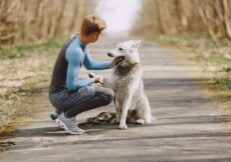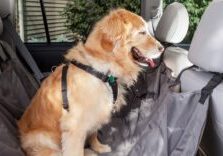A long-haul flight is never easy for any dog, even for the most experienced air travelers. There’s indisputably more anxiety for dogs than humans when it comes to travel; it’s simple — dogs don’t necessarily have a choice when it comes to traveling. It can be daunting since the road ahead of us is oftentimes unknown. Therefore, the more you prepare your dog for air travel, the smoother the journey will be. The bark-worthy news is that I’ve sniffed out 6 easy ways to make in-cabin air travel easy and healthy for our 4-legged companions. Here’s the scoop…
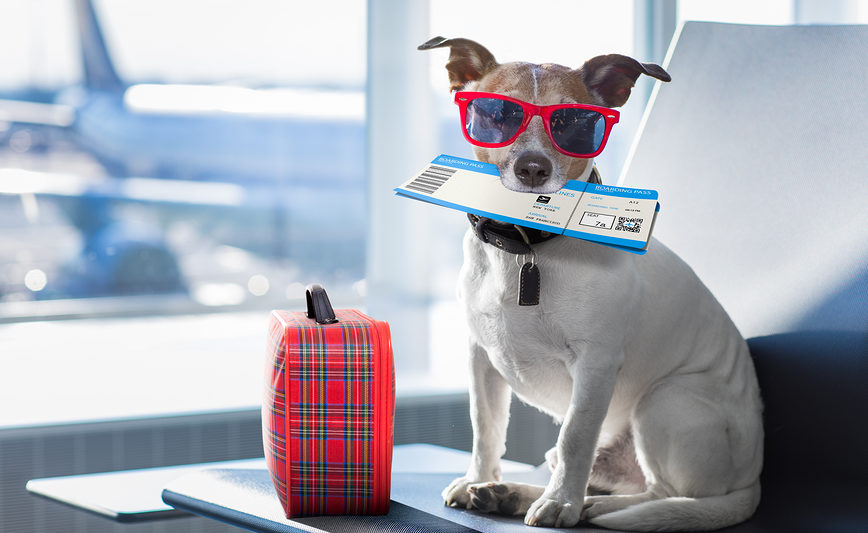
#1 – Ease Their Way In
Be a savvy traveler! First things first, don’t book a flight and expect your dog to wing it, especially if she has never flown before. Unless your dog is already highly experienced, chances are she needs to be eased into air travel. Road trips and train rides are great ways to get dogs comfortable with the motion of being on a plane. Once your dog has gone on a couple road trips or even train rides, she can advance to quick hour-long domestic flights to get acquainted with the airport, and of course, the plane itself. Gradually increase the flight duration until your dog is familiar and comfortable with the entire process. As for me, I went on several 6-8 hour long road trips and several shorter flights before my I felt comfortable flying with my dog from San Francisco to NYC.
#2 – Choose The Right Dog Carrier
Choosing the right dog carrier is key. When shopping around for a dog carrier, bring your dog with you for a “test-sit.” Make sure there’s enough room for your dog to turn around completely, sit, and lay down in it. If your dog appears tense, she is very likely uncomfortable; so, do your homework and search diligently until you find the right fit. Having soft durable padding within the carrier is also important to help Fido feel comfortable. Keep in mind that airlines (especially if you have connecting flights) may differ in acceptable carrier size so always check the airline website for their required dimensions before purchasing your dog carrier. Some airlines also have a total weight limit (which normally includes the weight of your dog, too). It’s a matter of finding comfort and meeting the airlines’ requirements at the same time.
As a frequent traveler, I have two dog carriers depending on the airline that I’m flying; the first one is a pretty spacious roller bag/backpack that fits perfectly under most U.S. airline seats. As it comes with multiple features, it weighs approximately 3.4 lbs.
My second carrier is your average soft lightweight carrier that weighs a little over 1 lb.; although it offers an opening in the front, it doesn’t offer as much space than my other carrier so I only use it if I have to meet a strict weight limit. I once flew an airline that had an 11 lb. maximum for both my dog and her carrier so I didn’t want to take any chances!
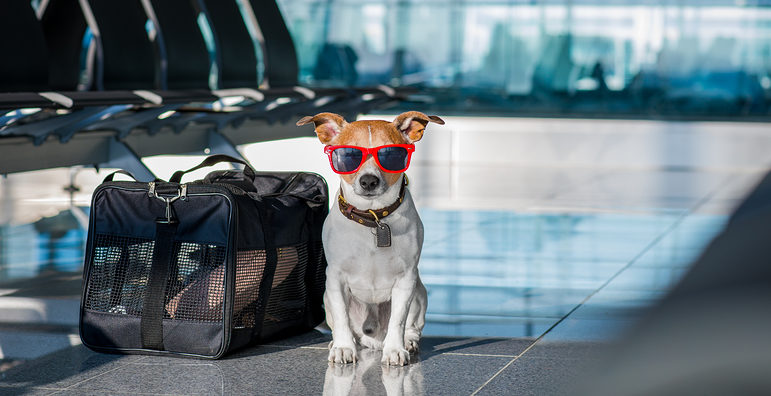
#3 – Start Dog Carrier Training Early
Once you’ve found the carrier that is right for your dog, you’ll want to start training as early as possible to ensure that she feels familiar with and comfortable in it long before your scheduled flight. The concept is to transform the carrier into a wondrous haven. As soon as you bring the carrier home, place your dog’s favorite blanket, toy, and treats inside. Hiding treats inside the carrier at the beginning of each training session will entice your dog to go in to sniff around. After several sessions of uncovering yummy treasures, she will eventually associate the carrier as a place worthy of their wet noses. Allow her to sniff around freely for treats during the first few days of training. Gradually, increase her time inside the carrier to about 3-5 minutes daily and work up to an hour or until she appears to feel comfortable and secure inside.
#4 – Book An Evening Flight
The experience of air travel can easily cause stress as your dog is thrown out of her daily grind without certainty of the road ahead. One effortless way to help your dog through a long flight is to opt for an evening flight so that Fido could at least stay on her sleeping schedule. Booking a flight near or during bedtime will likely help your dog sleep through the flight. The longer she sleeps on the flight, the shorter and smoother the flight will seem to her.
#5 – Exercise Before Your Flight Takes Off
As the saying goes, a tired dog is a happy dog. That being said, it’s probably fair to say that a tired traveling dog is also a happy traveling dog. I don’t recommend excessive exercise or extreme physical activity, however, adding a couple extra minutes of exercise or playtime could help ease your dog’s way into air travel. Feeling tired during the flight normally equates to superb sleep. Again, the more sleep she gains, the shorter and smoother the flight will seem. If your dog is up for it, I recommend a good 40-60 minute walk right before heading to the airport before a long flight so she can then lick her chops while dreaming about beef jerky treats thousands of miles up in the air!
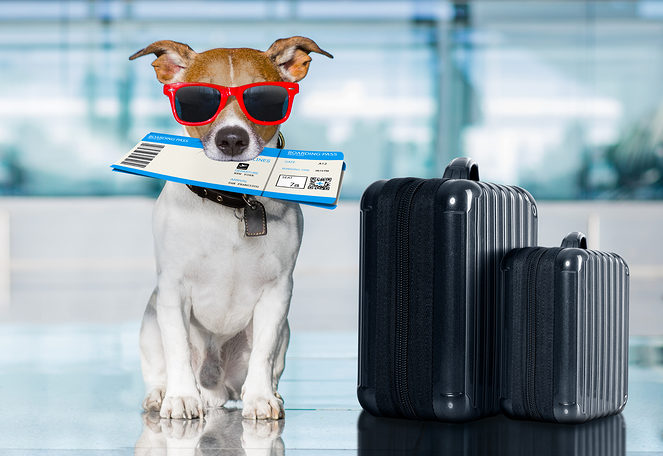
#6 – Limit Water Intake Right Before & During Your Flight
After exercising your dog, offer her fresh clean water and food. Never deny a dog of fresh clean water, but do be strategic when providing water right before and during the flight since you cannot easily relieve your dog on the plane (unless you have pee pads in the carrier). I choose to limit my dog’s water intake as soon we arrive at the airport. Most airports have areas designed for dogs to relieve themselves outside (and sometimes even inside). Offer your dog water (and of course, food) right after her walk before heading to the airport, and then once every 4 hours or so until landing. My veterinarian advised me that healthy adult dogs shouldn’t have a problem holding their bladder for 10 hours, but I still exercise this practice with caution. One option is to place a pee pad in the carrier just in case your dog absolutely has to relieve herself.
Author: Roger Wellington
Edited by: Erica Kei


